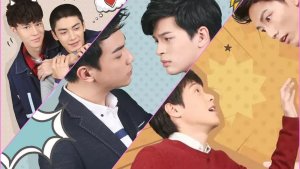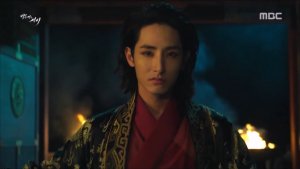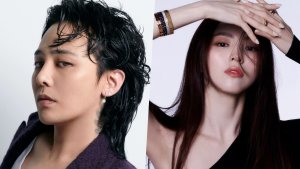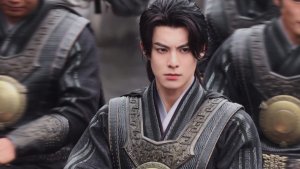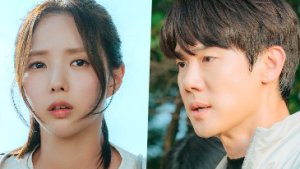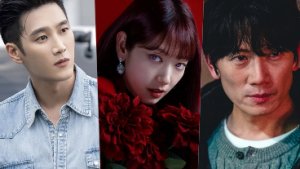 Dissecting HIStory: Part 2
Dissecting HIStory: Part 2
What happens when you gather a bunch of runway and magazine models who’ve never acted in their lives and ask them to film one of the bloodiest psychological dramas in KDrama history, while also hoping to answer a deep, philosophical question about the nature of evil?
You get White Christmas, a K-Drama like no other.
This 8-episode special came out in 2011, airing on KBS2 with a 19 rating, which is as high as TV show ratings go in South Korea. It’s easy to see why it has such a high rating: the show is absolutely bathed in blood, features a drug addict as the main character, and there are more than a few dead bodies in plain view. For South Korean TV, this show is intense, but it’s also brilliant, for many, many reasons.
Right now, I want to talk about the visuals. I don’t usually get into this because, most of the time, it’s not what I’m focusing on. I have so much fun breaking down characters and plots, that I really don’t think much about visuals. White Christmas is unique in that the visuals are integral not only to the tone, but also the story. The visuals aren’t just experimental for the sake of embellishment. It’s actually relevant to the show. So, let’s talk about it. Let’s break down exactly why this show’s visuals, as well as its music, are so effective.
Starting off, I think the intro is important to address. It’s the first thing you see in the first episode of the show, and I really like it. The theme song jams, it provides a nice introduction to all the main actors and helps set the tone. It doesn’t just show all the characters. It shows all the characters on a stark white background, surrounded by blood and smoke. Everything is black and white though, so it still feels subtle and restrained. I like that. It’s the little things that really get me.
Then we move past the intro and find ourselves confronted with the setting of the show, which happens to be probably one of the most important parts of the series. It’s called Susin High, and it’s home to the top 0.1% of high school students in South Korea. It’s nicknamed Prison High for its torturous study regiment. Seated high in the mountains, the school is surrounded by nothing but snow. It is entirely isolated from the rest of the world, and this becomes especially apparent when the blizzard hits and the kids become trapped inside. Even more striking is how nearly the entire outside of the school is made of glass. Like the main characters of the show, the school is an enigma. It’s very difficult to get in, but once you’re in, the school and the students become completely transparent. 
This school is important, not only from a symbolic and narrative perspective, but it also does a lot for the cinematography. The building, because it’s made of glass, allows for some wonderful, far away shots from the outside looking in. There are scenes where we see students race down flights of stairs, not by chasing after them with cameras, but by standing outside, tense, watching. Our lack of movement, from the perspective of a viewer, creates fear. We are forcefully separated from the heroes. We are just as isolated as they are. We want to be in the trenches with them, flying down those stairs at their side, but we can’t. All we can do is sit and watch and wait.
Even the structure of the building itself is useful. The school has very high ceilings and lots of wide, open spaces and lounges. Those big, empty areas also contribute to the feelings of loneliness, since everything is so devoid of life and colour. The high ceilings allow for some really interesting shots taken from high above the characters’ heads, again forcing distance between us and them. No one has to say, “Hey, it sure is lonely up in this lonely school all alone in the lonely mountains.” You just feel it.
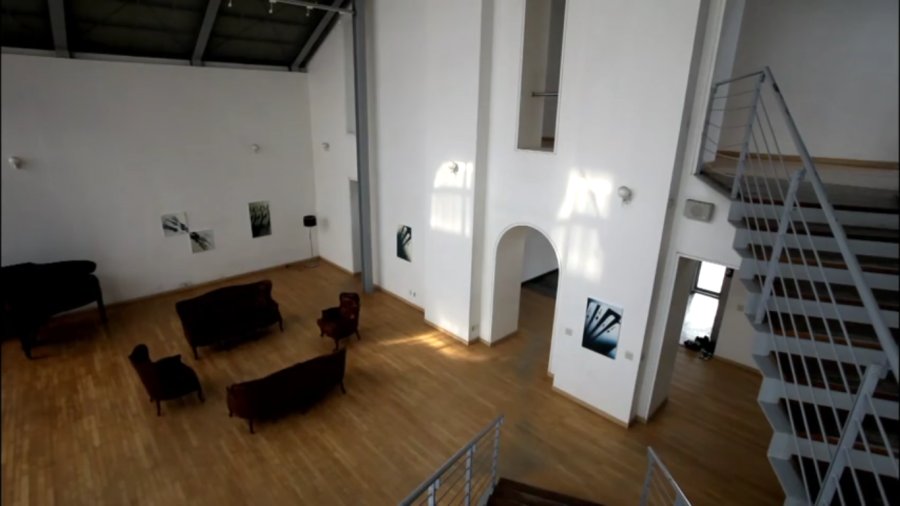
The other interesting thing I saw a lot of in this show was the use of static camera angles. The camera can be dynamic, sure, but the director relied much more heavily on planting the camera in one or two spots in a scene and carefully framing it so that the action all fits inside and was dynamic, without the camera needing to move around, too. It’s impersonal, which adds to the eerie feel of the show. When the cameras do move, it means something really important is happening. I suppose the static nature of the cameras could also represent how the children are always being watched on security cameras. Just about anything in this show could have some element of symbolism applied to it.
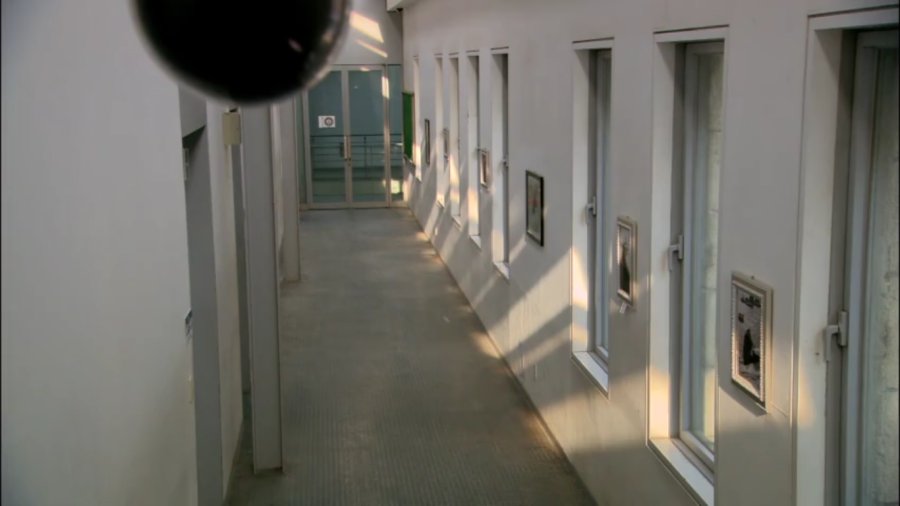 I also want to briefly touch on the colour composition of the show. Being that it takes place in the mountains during winter, it’s clear that white is a major player in the composition of the scenes. Black is just as important, though. When night falls, it is nearly pitch black outside the school. The very first dinner scene, where we’re introduced to all the main characters shows this best. Except for the spotlight on the dinner table, there is almost no light. All you can really see is the kids and the basic structure of the room, and nothing else. This is isolating and spooky. The only real colours we see are found in food, Mi Reu’s hair, and blood, meaning that our only exposure to something that contrasts the dreary mountainscape involves celebration, anger, or fear, all of which are very strong emotions. That’s powerful. Even the students’ clothes are all made up of Earthy tones, like brown, black, and dark blue.
I also want to briefly touch on the colour composition of the show. Being that it takes place in the mountains during winter, it’s clear that white is a major player in the composition of the scenes. Black is just as important, though. When night falls, it is nearly pitch black outside the school. The very first dinner scene, where we’re introduced to all the main characters shows this best. Except for the spotlight on the dinner table, there is almost no light. All you can really see is the kids and the basic structure of the room, and nothing else. This is isolating and spooky. The only real colours we see are found in food, Mi Reu’s hair, and blood, meaning that our only exposure to something that contrasts the dreary mountainscape involves celebration, anger, or fear, all of which are very strong emotions. That’s powerful. Even the students’ clothes are all made up of Earthy tones, like brown, black, and dark blue.
Altogether, the show’s use of colour, camera angles, and an interesting set make for a tone that’s almost palpable as you watch. The sense of fear and loneliness is oppressive, and that’s exactly what I expect out of a psychological thriller. I want to not just watch the show, but also feel it. Put me in the shoes of the characters. I don’t just want to be a viewer; I want to be part of the team.
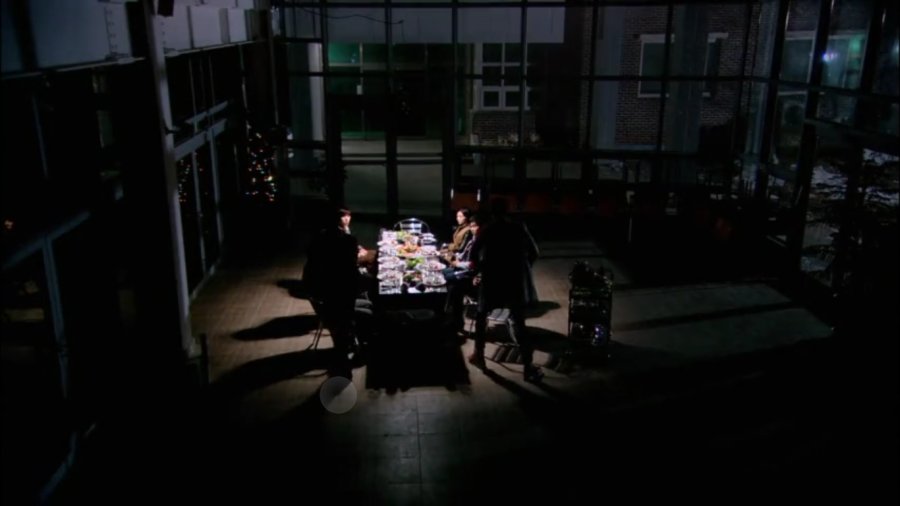
Let’s go a bit deeper and move away from generalities to talk about specific scenes. I must give a spoiler warning. I will be talking about moments throughout the series, so go watch it now, or forever hold your peace.
First, let’s talk about an interesting moment during the dinner scene where the teacher tells a scary story to the students about why an adult has to stick around when kids stay behind over winter break. Near the end of the story, the camera slowly creeps up on the star of the story, a former student, and she whips around to partially face us, her face shrouded almost entirely in shadows. At that very moment, there’s a match cut of Young Jae whipping around to face the camera fully. He looks directly at the camera, directly into our eyes. When the scene cuts to a shot much farther away, he’s still turned around in his chair, searching for us. This is not only interesting from a filmmaking perspective, but also because it’s our first big chunk of character development for Young Jae: he is a coward, set off by scary stories and the threat of someone watching him that isn’t really there. We’re the monster, and we didn’t even know it!
Another very poignant scene is the one where Choi Chi Hoon is “killed”. Three students sit and three students stand in different parts of a small lounge area, none of them together and not one of them purposely facing another student. They are as isolated as Chi Hoon. They hear the gunshot. Eun Sung instantly dissolves into tears and Jae Gyu crumples to the ground, his breaths becoming short and panicked. Yoon Soo sniffles and Moo Yeol, wracked with guilt, also begins to cry. Kang Mo looks around, unsure of what’s going on since his hearing aid died earlier. As Eun Sung runs to the bathroom to vomit, we finally pan around to the big bully, the big man, Young Jae, who cries the loudest, sobbing into his hands and tugging on his hair, wrought with fear and anguish. The viewer feels like they’re invading a very private moment. This simple pan around the room to each student conveys strong emotions. No one has to say a word for us to feel what they feel.
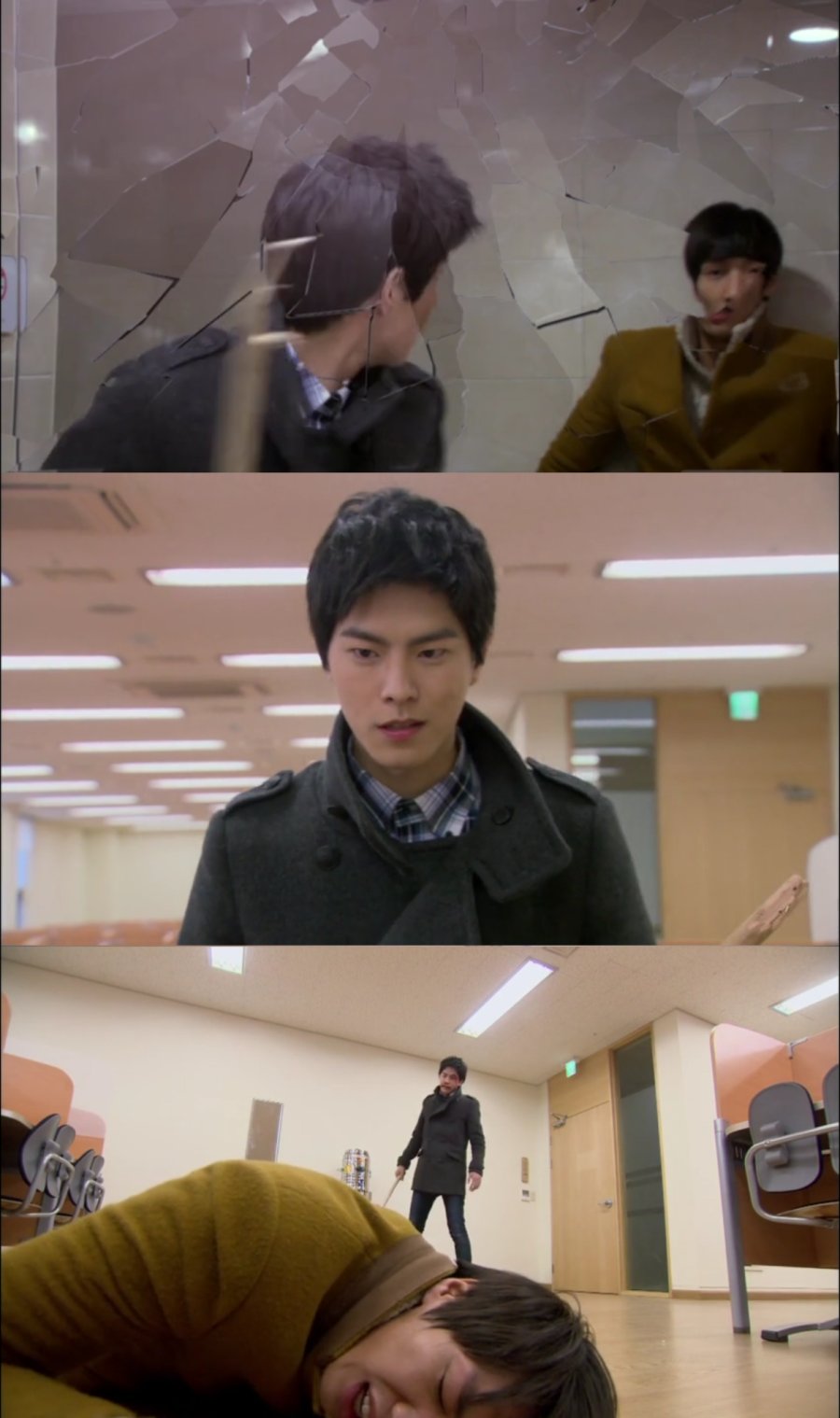
Finally, I want to talk about one of the most intense sequences in the whole series: the fight between Jae Gyu and Young Jae. Jae Gyu is usually quiet and jittery, which makes this scene all the more disturbing. Fed up with Young Jae, he grabs a stick and attacks him. For the first time in the series, Jae Gyu takes on a much more adult, a much more threatening persona. He stalks his prey through the school, cornering him in a classroom. Young Jae does overpower him long enough to bludgeon his face, but Jae Gyu eventually takes over and gives Young Jae a beating even Mi Reu can’t compete with. The scene where Mi Reu does beat Young Jae up is definitely nerve-wracking and fuelled by anger, but it’s noticeably different in tone. Mi Reu scares Young Jae because he has a reputation. Jae Gyu scares Young Jae because he’s acting so out-of-character that Young Jae doesn’t know how to react. Young Jae is usually the top dog, yet here’s the little guy, giving him the beatdown of a lifetime.
I also said I would talk about the music in the show. While having to criticize the downright maddening repetition of Back in Black, I do appreciate most of the other music in the show. The aforementioned intro theme is really good. The rest of the OST is solid, too, with some very recognizable music, as well as some more niche pieces. Most of the music is alternative rock and post-rock, with some pop mixed in (notably, Britney Spears’ Toxic features at the end of each episode; I was surprised, too, believe me). Each character seems to have their own song that follows them around, like Mi Reu and Back in Black by ACDC, Yoon Soo with Song 2 by DJ Krush, and Kang Mo with You... Who Do You Hate by Mansun.
While there are some more upbeat pieces, the OST as a whole is noticeably sad and quiet. It sounds like what a winter at that terrible school would feel like. Just listening to the music apart from the show makes me think of winter and what it feels like to breath freezing cold air early in the morning. The music adds so much to the atmosphere of the show. There are times when the characters don’t need to say anything because the music does all the talking for them. I love the cold, but this OST turns my favourite season on its head. I can’t get enough of it. Some highlights for me are Just Like Christmas by Low, Song 2 by DJ Krush, Spring I Love You Best by Big Baby Driver, and Taijin Kyofusho by The Evpatoria Report. I especially love that last one. You can find the whole OST here. I made a playlist just for you guys!
At the end of the day, White Christmas is honestly one of the most beautiful, most striking dramas I’ve ever watched. Unfortunately, it doesn’t seem like very many people have seen it. Currently, on MDL, 5,882 people watched the show to completion. In comparison, the top psychological K-Drama on the website, Master’s Sun, has been completed by 29,420 people (and I realize that White Christmas is a special, not a drama, but it’s so great I don’t think it should be sequestered like that). I wish this series would get more attention because it really deserves it.
In the second half of this miniseries, I’ll go into depth in the plot of this show and what makes its characters so unique. This show is pretty, but we can’t forget that it has an impressive story, as well.


